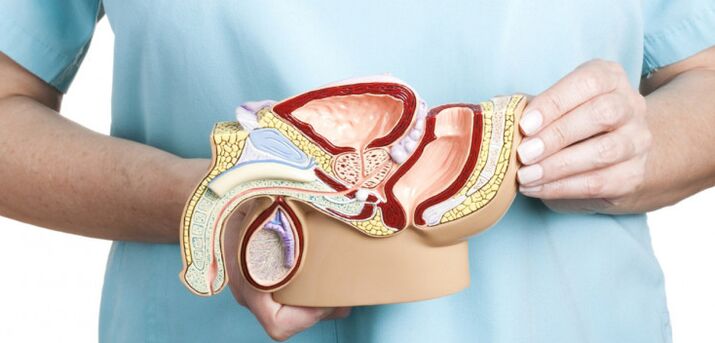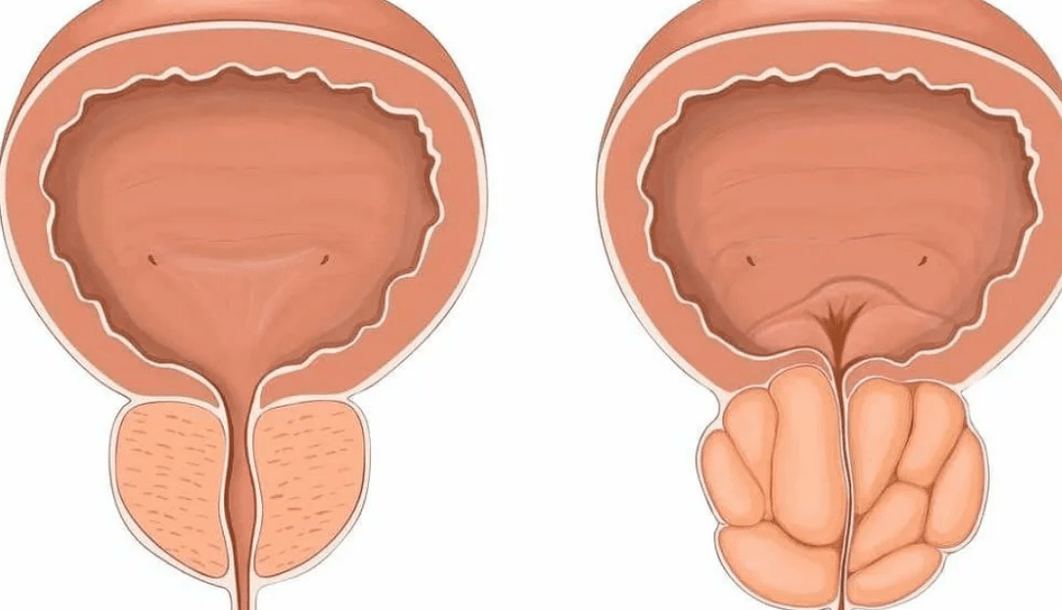
Prostatitis is inflammation of the prostate gland. This is the most common disease in men.
It is believed that prostatitis in most cases is associated with the penetration of infection. However, this is not entirely true. In some cases, the diseases are not contagious in nature.
The main cause of prostatitis is due to the peculiarities of the anatomical structure of the prostate gland and its blood supply.
Features of prostatitis

The prostate gland is located in the pelvic region. Its anatomical structure is different from that of all other human glands. The prostate gland consists of several parts and only one of them contains glandular tissue. The glandular tissue of the prostate gland consists of many small glands, each with its own secretory duct. The ducts fuse together to form the largest conduit. Both in the small and large ducts there are extensions, the sinuses, in which the secret of the prostate gland accumulates - prostatic fluid. In turn, prostate fluid is an excellent nutrient medium for bacterial growth, and the cells lining the sinuses are an excellent substrate for the survival of intracellular genital infections (chlamydia, mycoplasmas, ureoplasms, viruses). In addition, the prostate gland has no major blood vessels of its own and is supplied with blood by small vessels from eight to ten sources. The rate of blood flow in the prostate is initially low, which, in turn, leads to both the development of the onset of infection and the formation of congestive changes in the prostate tissue itself. These circumstances largely determine the complexity of the structural changes in the prostate and the variety of clinical prostatitis forms.
There are many classifications of prostatitis, but none are exhaustive. In short, there are two main episodes of prostatitis: chronic and acute.
acute prostatitisdiffers from chronic in a more vivid symptom complex. Its treatment is carried out using significant doses of antibiotics, and in some cases, surgery is required to remove the abscess from the prostate.
Symptoms of acute prostatitis
High temperature, severe pain in the perineum, groin, above the pubic bone. Pain when urinating. Poor general health. Reduced potency, etc. v.
In chronic prostatitis, the clinical picture is often blurred.There may be no symptoms at all. Very often, problems with potency and sexual intercourse are attributed to general fatigue, psychological stress at work, lack of rest and, therefore, a person simply does not understand that he is sick. Therefore, in this case, preventive examination plays an important role, the purpose of which is to identify incipient prostatitis.
Chronic prostatitis symptoms
- pain that arises and quickly passes in the perineum, inguinal region, above the pubic bone;
- decreased libido (libido);
- change in the duration of sexual intercourse (in some cases, rapid ejaculation, in others - significantly prolong the duration of sexual intercourse);
- change in the nature of sexual sensations (reduce the brightness of orgasm);
- the appearance of discharge from the urethra, especially in the morning.
Why is prostatitis dangerous?
In the absence of qualified treatment of prostatitis, then a violation of sexual function occurs - impotence, poor ejaculation (especially rapid ejaculation). Prostatitis can become chronic and lead to urinary stones and infertility.
Prostatitis treatment
Prostatitis treatment should be comprehensive and well-chosen. Treatment includes measures such as antibiotic therapy, prostate massage. Prostate massage, although causing some discomfort, is a necessary procedure. Firstly, for diagnosis, when it is necessary to take bile from the prostate for study, in addition, in certain cases, people also conduct massage to relieve prostate congestion. Usually this event is approached seriously and selectively.
For the treatment of prostatitis, physiotherapy, immunomodulatory therapy, lifestyle modification are widely used.
In modern medicine, almost everywhere, physiotherapy methods are used for the treatment and prevention of many diseases. Taking into account many years of experience in the effectiveness of using physiotherapy from domestic and foreign doctors, to treat our patients, we only use advanced imported equipment. and latest for electrotherapeutic procedures (electrophoresis, pulse and alternating current, electrical stimulation, etc. ), laser therapy with various spectrums, ultrasound therapy, magnetic therapy, therapyvacuum.
Prostatitis prevention
To prevent prostatitis, it is important to organize your life so that there are as few risk factors as possible for the development of this disease. Should establish a balanced diet, limit eating spicy and fatty foods, do not abuse alcohol, maintain a stable normal weight. Stay calm and move as much as possible. It is necessary to have a regular, non-abstinent sex life for a long time to maintain the constant circulation of sperm and an active blood supply to the prostate gland. True, we should not forget that the development of prostatitis is often provoked by sexually transmitted diseases, so having sex should not only be frequent, but also protected. Ideally, every man should have a preventive urologist visit at least once a year. First of all, it is necessary to examine the prostate gland and prostate ultrasound, after the age of 40, it is mandatory to donate blood for tumor markers.
Prostatitis is a complex and insidious disease; Its treatment is a big problem for doctors all over the world. However, this does not mean that doctors cannot help patients with prostatitis. It is not always possible to completely cure the patient, but to eliminate the symptoms of prostatitis, to induce stable long-term remission, modern medicine can do. And the duration of this phase depends on the patient himself. If he honestly followed the doctor's recommendations.
Prostatitis is a disease that is easier to avoid than to cure. Make small life changes that are helpful and necessary to prevent prostatitis, and you won't have this annoying and complicated disease for the rest of your life.
Be sure to consult a qualified specialist in the field of gynecology at the Semeynaya clinic.

























